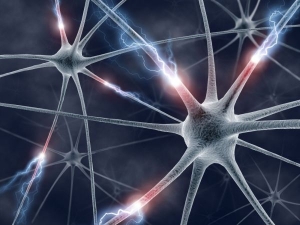Aggregated News

How does a brain chip work?
Neuralink’s coin-size device, called N1, is designed to enable patients to carry out actions just by concentrating on them, without moving their bodies.
Subjects in the company’s PRIME study – short for Precise Robotically Implanted Brain-Computer Interface – undergo surgery to place the device in a part of the brain that controls movement. The chip records and processes the brain’s electrical activity, then transmits this data to an external device, such as a phone or computer.
The external device “decodes” the patient’s brain activity, learning to associate certain patterns with the patient’s goal: moving a computer cursor up a screen, for example. Over time, the software can recognize a pattern of neural firing that consistently occurs while the participant is imagining that task, and then execute the task for the person.
Neuralink’s current trial is focused on helping people with paralyzed limbs control computers or smartphones. Brain-computer interfaces, commonly called BCIs, can also be used to control devices such as wheelchairs.
A few companies are testing BCIs. What’s different about Neuralink?
Noninvasive...



